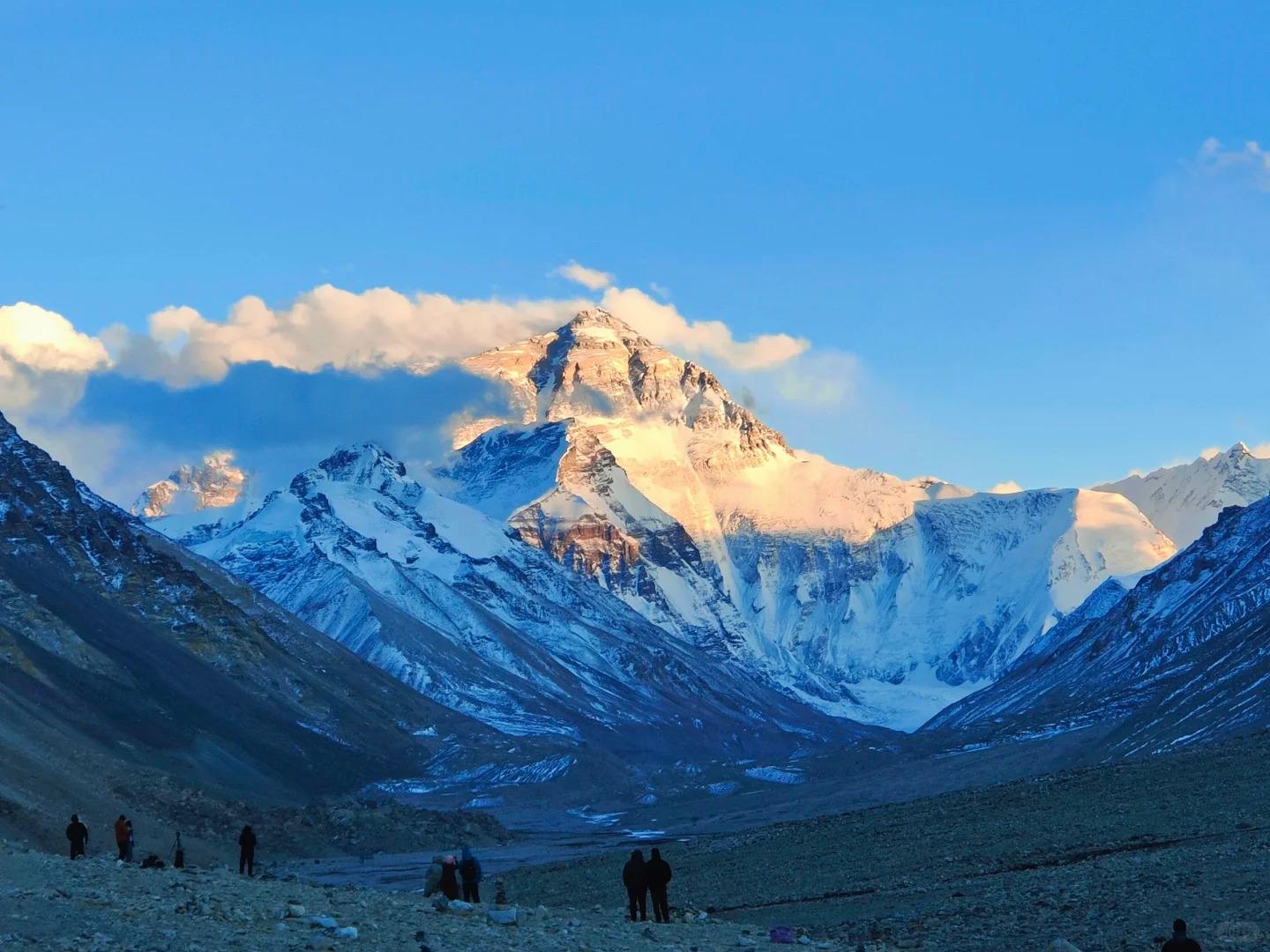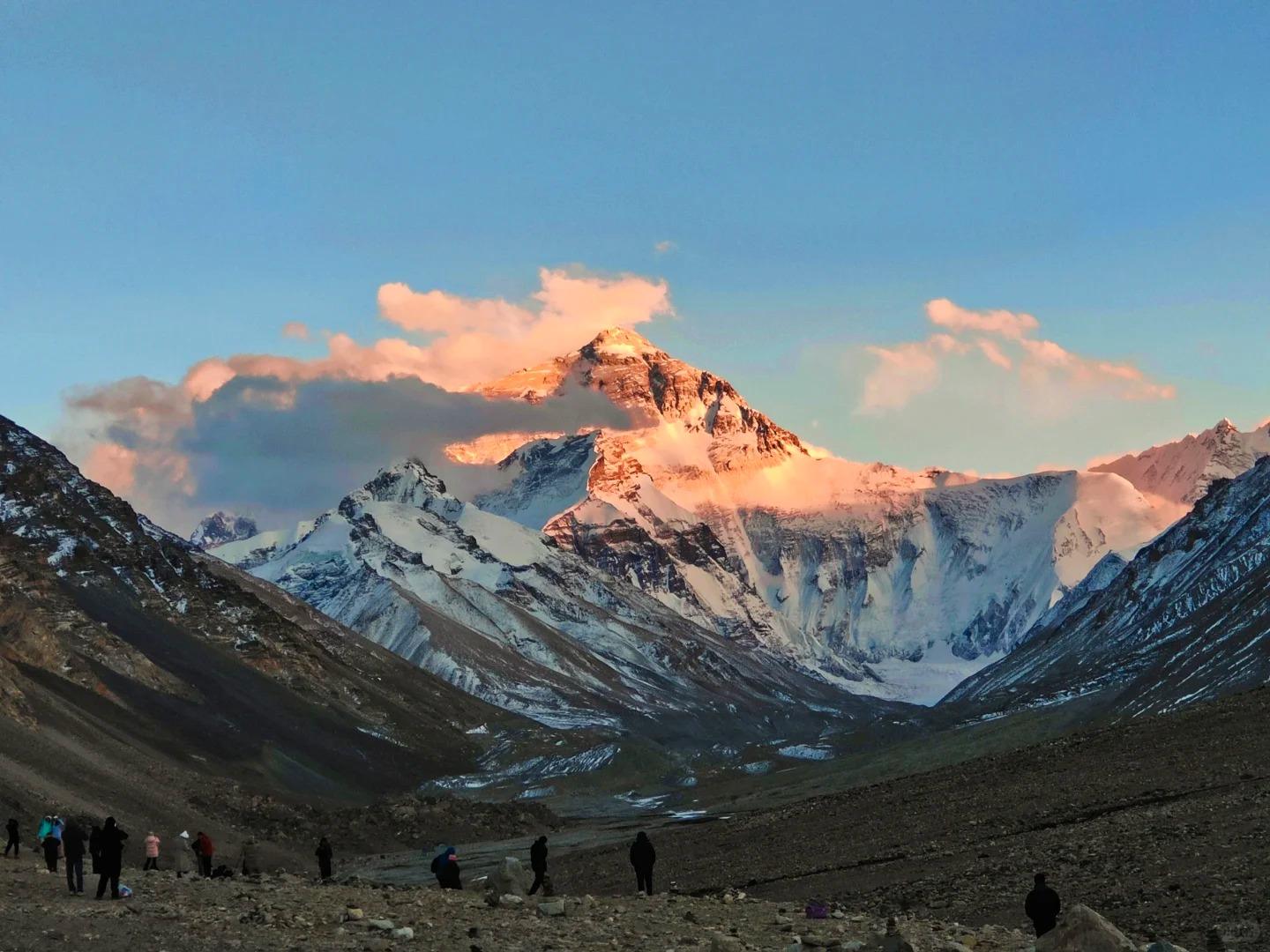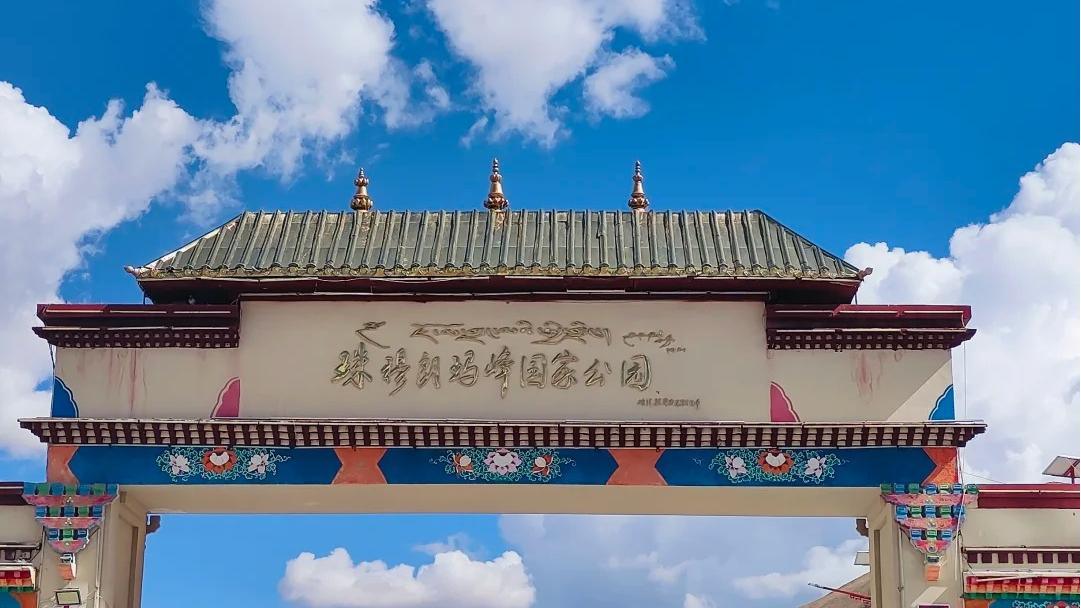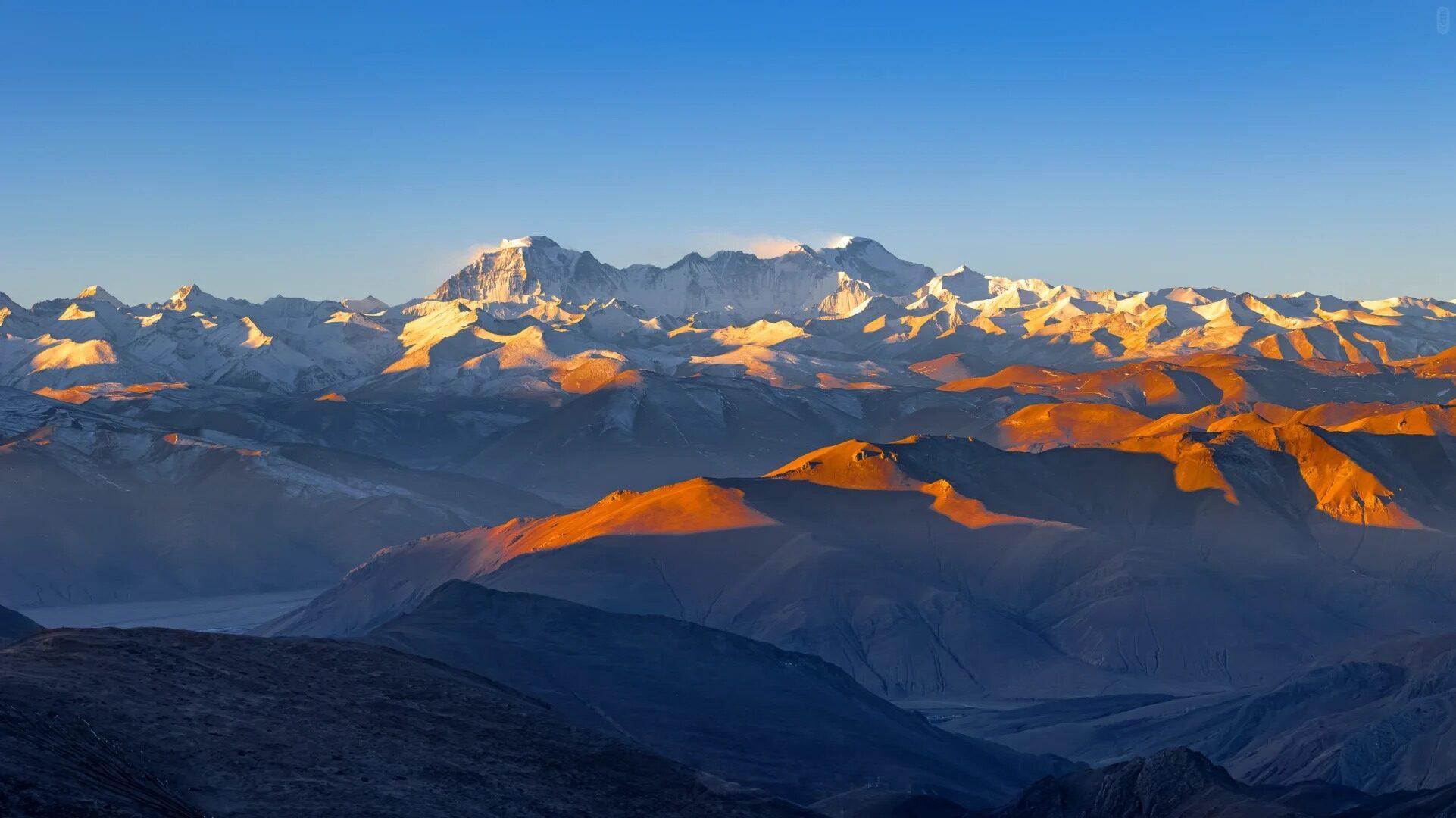Visiting Information
| Information | Details |
|---|---|
| Chinese Name | 珠穆朗玛峰大本营 (Zhūmùlǎngmǎ Fēng Dàběnyíng) |
| Location and Address | Tingri County, Shigatse Prefecture, Tibet Autonomous Region, China |
| Opening Time/Hours | Open year-round, but access may be restricted during winter months |
| Entrance Fee | 200 CNY (included in the Qomolangma National Nature Reserve entrance fee) |
| How to Get There | By Bus: Take a bus from Lhasa to Shigatse, then to Tingri, followed by a local vehicle to EBC By Car: Hire a 4WD vehicle with a driver from Lhasa or Shigatse Note: There is no metro or regular taxi service to EBC |
| Best Time for Visit | April to May and September to October |
| Contact Info | Tibet Tourism Bureau: +86 891 6834313 |
Overview
Mount Everest Base Camp (EBC) on the Tibet side is a legendary destination for adventurers and mountain enthusiasts worldwide. Located at an altitude of 5,150 meters (16,900 feet), it serves as the starting point for climbers attempting to summit Mount Everest, the world’s highest peak. The base camp offers breathtaking views of Everest and surrounding Himalayan giants, providing visitors with a once-in-a-lifetime experience of being in the presence of these majestic mountains.
Historical Background
The history of Mount Everest Base Camp is closely tied to the exploration and conquest of Everest itself. The northern route to Everest, which passes through Tibet and includes this base camp, was the path of early British expeditions in the 1920s and 1930s. George Mallory and Andrew Irvine famously used this route in their ill-fated 1924 expedition. The Chinese Base Camp was established in the 1950s when China took control of Tibet. In 1960, the first successful ascent from the north side was achieved by a Chinese team. Since then, the base camp has served as a crucial staging point for numerous expeditions and has gradually developed into a tourist destination in its own right, allowing non-climbers to experience the Everest region.

Architectural Features
- Rongbuk Monastery: Located near the base camp, Rongbuk Monastery is considered the highest monastery in the world at 5,000 meters (16,400 feet). It’s a significant landmark and offers accommodation for visitors. The monastery provides a unique blend of Tibetan Buddhism and the extreme environment of the Himalayas.
- Tourist Base Camp: The main area where most visitors stay, it consists of a collection of semi-permanent structures including basic guesthouses, tents, and a small visitors’ center. These facilities are designed to withstand the harsh high-altitude environment while providing essential services to tourists and trekkers.
- Mountaineering Base Camp: Located further up the mountain and not accessible to regular tourists, this is where serious climbers acclimatize and prepare for their ascent. It consists of more rugged tents and equipment storage areas, designed for the specific needs of high-altitude mountaineering.
- Memorial Structures: Various cairns and memorials dedicated to climbers who lost their lives on Everest can be found in the base camp area. These simple yet poignant structures serve as reminders of the mountain’s dangers and the human spirit of adventure.
Cultural Importance
Mount Everest Base Camp holds significant cultural importance, blending Tibetan Buddhist traditions with the global mountaineering community’s ethos. For Tibetans, the mountain (known as Qomolangma) is sacred, embodying spiritual and cultural values. The nearby Rongbuk Monastery plays a crucial role in local religious life and often blesses climbing expeditions. For the international community, the base camp represents the gateway to one of humanity’s greatest physical challenges, symbolizing human endurance and the quest to push beyond perceived limits. It has become a pilgrimage site for adventure enthusiasts and a symbol of the delicate balance between human ambition and respect for nature’s most imposing landscapes.
Surrounding Attractions
- Rongbuk Glacier: The Rongbuk Glacier is one of the primary glaciers flowing north from the Everest massif. It offers spectacular views and is an important site for climate change research. Visitors can witness the dramatic landscape shaped by glacial movement and learn about the impact of global warming on these high-altitude environments.
- Old Tingri: This small Tibetan town, located en route to EBC, provides a glimpse into traditional Tibetan life. It’s known for its stunning views of Mount Everest and Cho Oyu. Old Tingri is a popular stop for acclimatization and offers basic accommodation and dining options for travelers.
- Tashi Lhunpo Monastery: Located in Shigatse, this monastery is one of the largest and most important in Tibet. Founded in 1447 by the 1st Dalai Lama, it’s the traditional seat of the Panchen Lamas. The monastery complex is a treasure trove of Tibetan art, architecture, and religious artifacts.
- Sakya Monastery: This 13th-century monastery, situated between Shigatse and EBC, is known for its Mongolian architecture and vast collection of Tibetan Buddhist scriptures. The monastery’s grey walls with red and white vertical stripes make it visually distinct from other Tibetan monasteries.

Photography Opportunities
- Everest Sunrise and Sunset: The golden hours provide spectacular opportunities to capture Mount Everest bathed in warm light. The changing colors on the mountain face, from deep orange to soft pink, create breathtaking images. Early morning often offers clearer skies and better chances of an unobstructed view.
- Starry Night Skies: The high altitude and minimal light pollution make EBC an excellent location for astrophotography. On clear nights, the Milky Way can be captured arching over Everest, creating otherworldly images that showcase the mountain’s immensity against the cosmic backdrop.
- Prayer Flags and Stupas: The colorful Tibetan prayer flags fluttering against the backdrop of snow-capped peaks offer vibrant foreground elements for landscape shots. Similarly, the stupas near Rongbuk Monastery provide interesting compositional elements, blending cultural and natural elements in a single frame.
- Rongbuk Monastery: This highest monastery in the world offers unique architectural shots with Everest looming in the background. The juxtaposition of ancient Tibetan architecture against the harsh mountain landscape creates compelling visual narratives.
- Local Tibetan Life: The base camp and surrounding areas provide opportunities to capture portraits of local Tibetans, yak herders, and pilgrims. These human elements can add depth and cultural context to your Everest photography portfolio.
Modern Importance
- Tourism Hub: EBC has become a major tourist destination, attracting thousands of visitors annually. This influx of tourism has significant economic implications for the region, providing income and employment opportunities for local communities. It has also necessitated the development of infrastructure and services in this remote area.
- Climate Change Monitoring: The Everest region, including the base camp area, serves as a crucial site for studying the impacts of climate change. Scientists regularly conduct research here, monitoring glacial retreat, changes in snow cover, and other environmental indicators. EBC provides a unique vantage point for observing these changes in high-altitude ecosystems.
- Adventure Sports Development: Beyond being a starting point for Everest climbs, EBC has contributed to the growth of high-altitude trekking and mountaineering as adventure sports. It has set standards for extreme tourism and helped develop protocols for high-altitude safety and acclimatization.
- Cultural Preservation: The increased global attention on EBC has inadvertently contributed to efforts to preserve Tibetan culture. As visitors seek authentic experiences, there’s been a renewed focus on maintaining local traditions, architecture, and religious practices, helping to keep Tibetan culture vibrant in the face of modernization.
- Environmental Awareness: The base camp’s popularity has raised awareness about environmental issues in high-altitude regions. Efforts to manage waste, limit environmental impact, and promote sustainable tourism practices at EBC have become models for other sensitive ecological areas worldwide.

FAQ
- What is Mount Everest Base Camp famous for?
Mount Everest Base Camp is famous for being the starting point for Everest summit expeditions and offering spectacular views of the world’s highest peak. It’s also known for its extreme altitude and unique Tibetan culture. - What’s inside Mount Everest Base Camp?
Inside Mount Everest Base Camp, you’ll find basic accommodations like tents and guesthouses, a visitor center, and stunning views of Everest. Nearby, there’s also the historic Rongbuk Monastery. - Is Mount Everest Base Camp free?
No, Mount Everest Base Camp is not free. There’s an entrance fee for the Qomolangma National Nature Reserve, which includes access to the base camp. - Is Mount Everest Base Camp worth visiting?
Yes, Mount Everest Base Camp is worth visiting for its breathtaking views, unique cultural experiences, and the once-in-a-lifetime opportunity to be close to the world’s highest peak. - What to do in Mount Everest Base Camp?
At Mount Everest Base Camp, you can take in the views of Everest, visit Rongbuk Monastery, interact with fellow travelers and locals, take photographs, and experience the unique high-altitude environment. - How do I get to Mount Everest Base Camp in the local city?
From Lhasa, the capital of Tibet, you can take a bus to Shigatse, then to Tingri, followed by a local vehicle to EBC. Alternatively, you can hire a 4WD vehicle with a driver for the entire journey. - How to visit Mount Everest Base Camp?
To visit Mount Everest Base Camp, you need to obtain a Tibet Travel Permit and join an organized tour. It’s best to allow time for acclimatization, dress warmly, and be prepared for basic facilities. Most visits are part of multi-day tours that include other Tibetan attractions.



